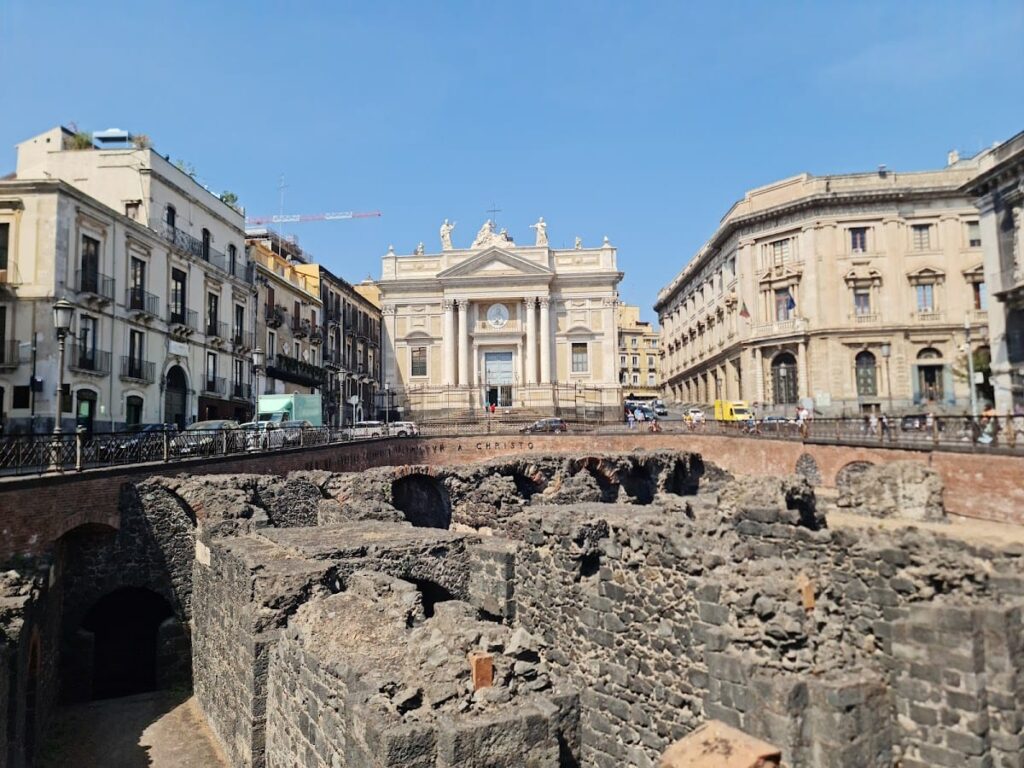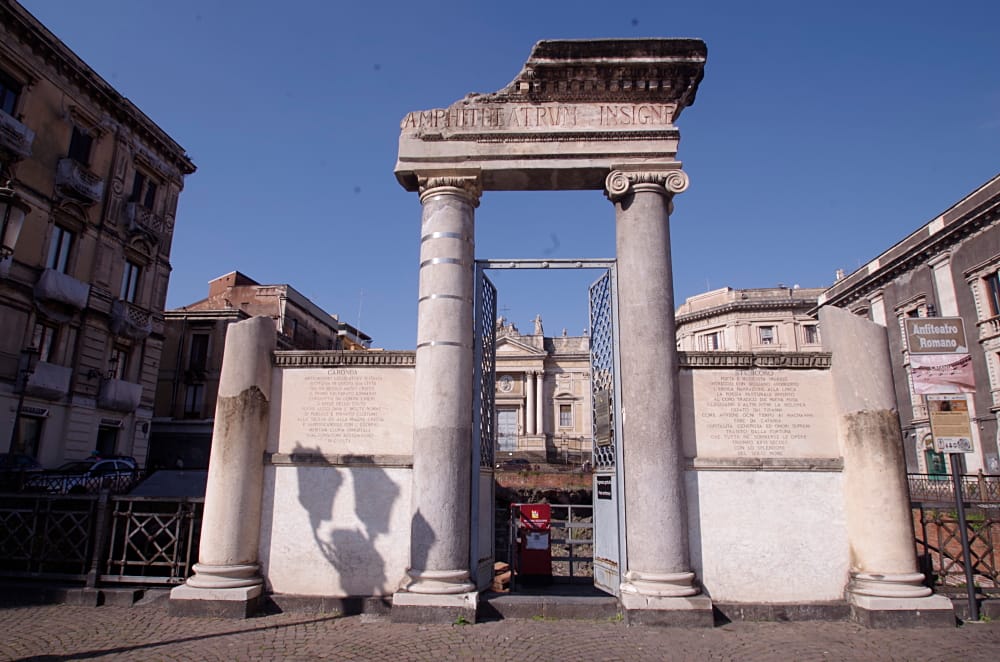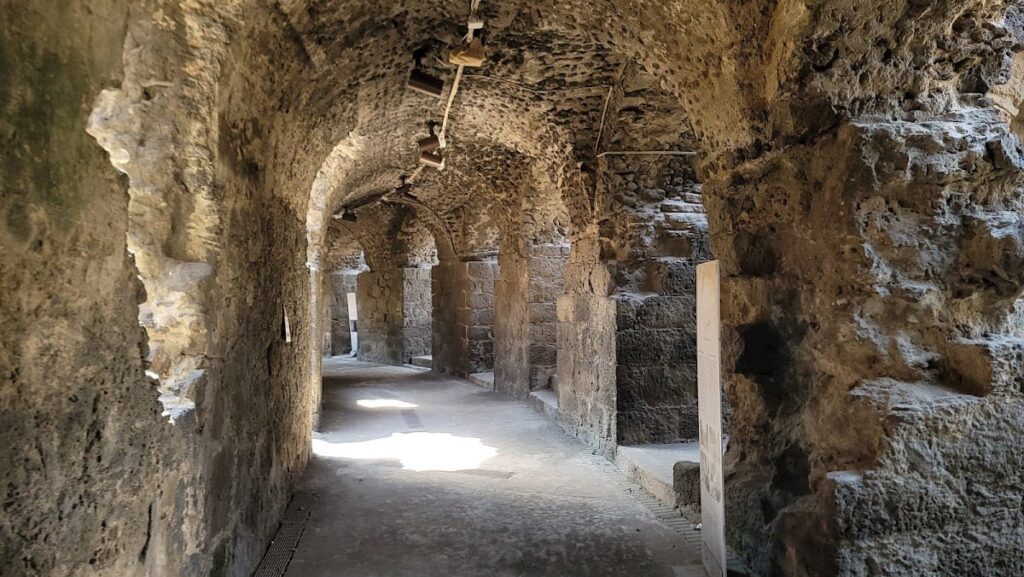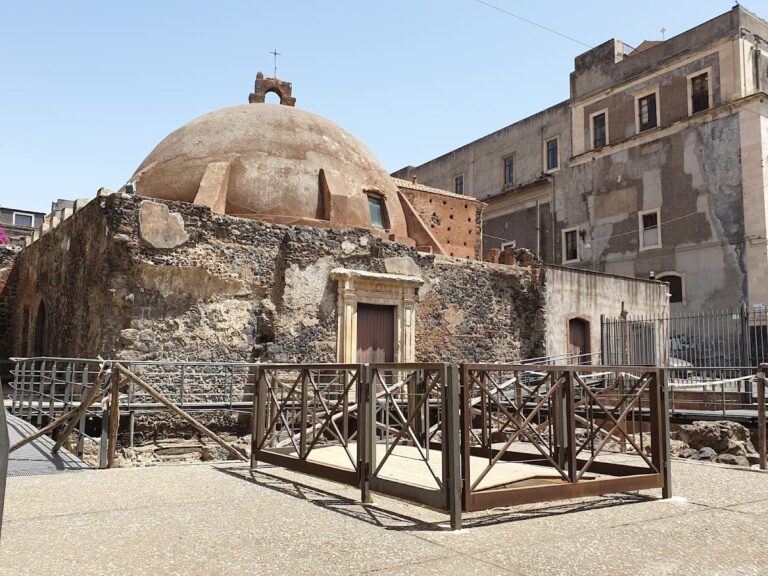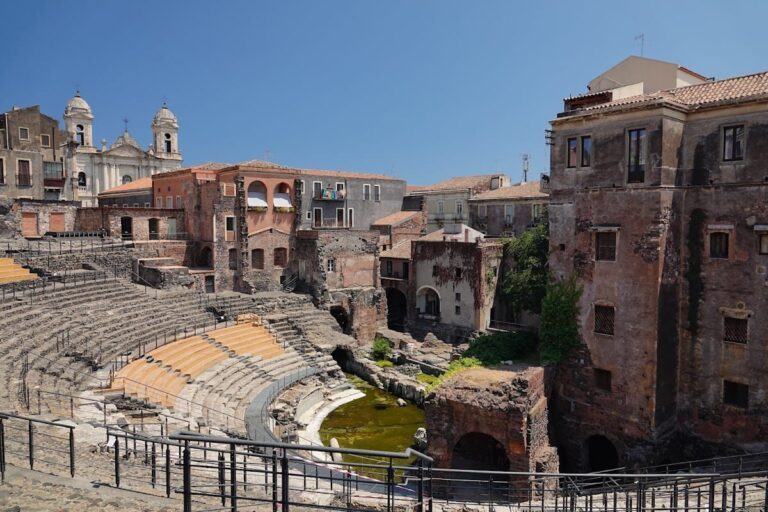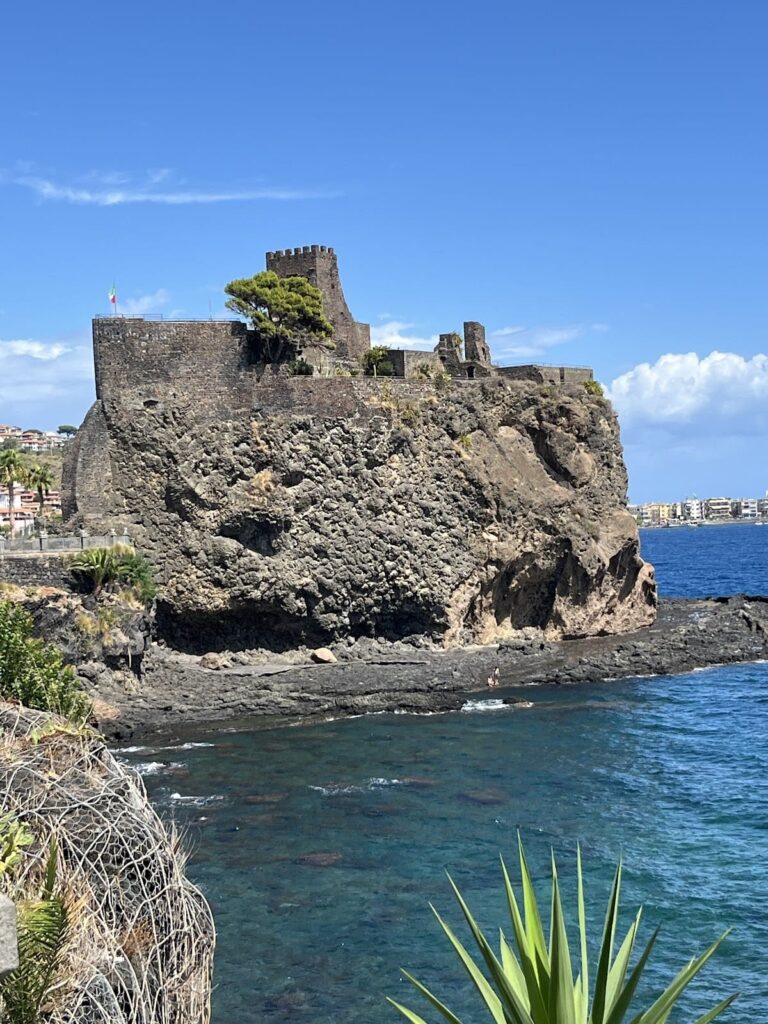Roman Amphitheatre of Catania: An Ancient Roman Monument in Sicily
Visitor Information
Google Rating: 4.3
Popularity: Medium
Google Maps: View on Google Maps
Official Website: parchiarcheologici.regione.sicilia.it
Country: Italy
Civilization: Roman
Remains: Entertainment
History
The Roman Amphitheatre of Catania is located in the city of Catania, Sicily, Italy. It was built by the Romans during the Imperial period, likely in the 2nd century AD. Positioned on the northern outskirts of ancient Catania near Montevergine hill, the site was originally close to a necropolis.
In the 3rd century AD, the amphitheatre underwent a significant expansion that tripled its original size. By the 5th century, the structure had fallen into disuse. According to the historian Cassiodorus, King Theodoric of the Ostrogoths allowed local inhabitants to quarry the amphitheatre for building materials during this period of abandonment.
During the 11th century, parts of the amphitheatre, including granite columns, were repurposed by Roger II of Sicily for constructing the Cathedral of Sant’Agata and possibly the nearby Castello Ursino. In the 13th century, amid the Sicilian Vespers conflict, the amphitheatre’s entrances, known as vomitoria, were used by the Angevin forces to enter Catania. By the early 14th century, these entrances were sealed, and the ruins were incorporated into Aragonese fortifications built in 1302.
In 1505, the city senate granted permission to Giovanni Gioeni to use stones from the amphitheatre for housing construction and to transform the arena into a garden. Mid-16th century fortification efforts led to the demolition of the first two floors and the filling of galleries with rubble. After the devastating earthquake of 1693, the amphitheatre was buried, and the area was converted into a parade ground.
Later, the surviving upper parts of the galleries served as foundations for new buildings and the neoclassical facade of the Church of San Biagio. Archaeological interest began in the late 18th century, with Ignazio Paternò Castello uncovering corridors and arches. However, many discoveries were not preserved, and some arches were walled up and reused.
Excavations in the early 20th century, led by architect Filadelfo Fichera between 1904 and 1906, revealed a mysterious landing passage likely added in the late 3rd century. This modification altered the arena’s size and visibility. The site was opened to the public in 1907, with King Victor Emmanuel III attending the inauguration.
The amphitheatre suffered neglect during the interwar years, with tunnels beneath it used as sewers by overlying buildings. During the 1943 Allied bombing of Catania, the structure functioned as a bomb shelter. Renovations in 1997 allowed summer openings, but sewage infiltration and structural decay caused closures. A partial reopening occurred in 1999 before further closure.
By 2014, the amphitheatre was reported to be at risk of collapse. A technical committee was formed to plan its recovery and to secure the surrounding neighborhood.
A popular but unverified legend claims lava from the 252 AD eruption of Mount Etna reached the amphitheatre but did not destroy it. Stratigraphic studies, however, confirm that lava flows stopped well before reaching Catania.
Remains
The amphitheatre has an elliptical shape with an arena measuring about 70 meters along its longest axis and 50 meters along its shortest. The entire structure measures approximately 125 by 105 meters, with an external circumference of 309 meters and an arena circumference of 192 meters. It could seat around 15,000 spectators, with capacity nearly doubling when including standing areas on wooden bleachers.
The seating area, or cavea, featured 14 steps and 32 aisles supported by radial walls and vaults. A peripheral gallery upheld the external facade. Construction combined different techniques: internal walls used opus vittatum, a method involving horizontal stone bands, while the exterior employed opus quadratum, large squared blocks. Pilasters made of volcanic rock remain visible on the exterior.
Basalt from Mount Etna formed the cavea’s core, faced with marble. Main staircases were likely limestone, creating a contrast between white seating and dark stairways. The external walls show irregularly cut blocks, many reused, suggesting some carelessness in construction. External arches consist of large, regularly shaped rectangular bricks with high-quality mortar, while internal arches are made of Roman concrete with large radial plates.
The amphitheatre’s color contrast between dark volcanic stone and red brick arches was visually striking. Marble was used not only for cladding the podium but also for decorative elements such as herms flanking the main entrance. The building was probably equipped with large awnings to protect spectators from sun and rain.
A tradition, though unconfirmed, holds that mock naval battles, or naumachiae, were staged by flooding the arena using the ancient Roman aqueduct of Catania. The excavated section is accessed through an iron gate decorated with fragments of marble columns, two fragmentary Ionic capitals, and an architrave inscribed with “AMPHITHEATRVM INSIGNE.”
The entrance includes central metal doors flanked by columns with capitals supporting the architrave. Two additional columns stand at the sides, separated by stone walls bearing epitaphs of two ancient Greek figures, Charondas and Stesichorus. These epitaphs were composed by the poet Mario Rapisardi, and the tombs of these figures are traditionally believed to lie near the amphitheatre.
Today, only about one-tenth of the amphitheatre is visible above ground, mainly near Piazza Stesicoro and Vico Anfiteatro, where the structure rises up to the third floor. Until 2007, parts of the second floor were visible from Via del Colosseo but are now covered by the terrace of Villa Cerami, which houses the University of Catania’s Faculty of Jurisprudence. Inside Villa Cerami, parts of the vaulting system connecting the amphitheatre to Montevergine hill remain visible. The majority of the amphitheatre lies buried beneath modern streets such as Via Neve, Via Manzoni, and Via Penninello.

